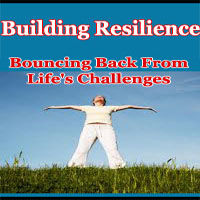


Paving The Path To Success And Fulfillment

Setting and pursuing goals is an integral part of personal and professional growth. Realistic goals, in particular, play a crucial role in achieving success and fulfillment. In this article, we will explore the significance of setting realistic goals, the benefits they offer, and how to create them effectively.
Understanding Realistic Goals
Realistic goals are those that are achievable within the constraints of your resources, time, and abilities. These goals are grounded in reality, and they are not overly ambitious or unattainable. They take into account your current circumstances and limitations while aiming for meaningful progress.
The Importance Of Realistic Goals
Motivation And Confidence: Setting realistic goals allows you to see consistent progress, which in turn boosts motivation and confidence. Achieving smaller, attainable milestones can be highly motivating and keep you on track.
Reduced Stress: Unrealistic goals can lead to stress and anxiety, as they often set you up for failure. Realistic goals, on the other hand, promote a healthier, more balanced approach to success.
Clarity And Focus: Realistic goals provide clarity and direction. They help you prioritize and focus on what is most important, reducing distractions and enhancing productivity.
Sustainability: Goals that are too ambitious may lead to burnout, while realistic goals are more sustainable. They allow you to pace yourself, maintain work-life balance, and avoid overexertion.
Creating Realistic Goals
Self-Reflection: Start by assessing your current situation, skills, and resources. Consider your strengths and weaknesses. This self-reflection provides a foundation for setting realistic goals.
Specificity: Be clear and specific about what you want to achieve. Vague goals make it challenging to measure progress and stay on course.
Measurable Outcomes: Set criteria for measuring your progress. Define how you will know when you've achieved your goal. Having concrete metrics keeps you accountable.
Attainable Targets: Ensure that your goals are within reach given your current capabilities, resources, and constraints. It's essential to challenge yourself but not set unattainable standards.
Relevance: Ask yourself if the goal aligns with your values, interests, and long-term aspirations. Goals that are meaningful to you are more likely to be pursued with dedication.
Time-Bound: Establish a clear timeline for achieving your goals. Having deadlines creates a sense of urgency and helps you manage your time effectively.
Flexibility: While setting realistic goals is important, be prepared to adjust them when necessary. Life is full of unexpected twists, and your goals should be adaptable to changing circumstances.
Example Of A Realistic Goal: Rather than setting a broad goal like "Lose 50 pounds in a month," a realistic goal would be "Lose 1-2 pounds per week over the next six months by following a balanced diet and engaging in regular exercise."
Realistic goals are the stepping stones to success and fulfillment. They provide a sense of direction, motivation, and clarity while minimizing stress and overwhelm. By following a structured approach to goal setting and ensuring your goals are specific, measurable, attainable, relevant, and time-bound, you can create a roadmap for personal and professional growth that is both achievable and meaningful. Remember that real progress often comes from consistent and sustainable efforts, and realistic goals help you stay on that path to success.






A Path To Emotional Strength
 Stress Reduction: Practicing gratitude can reduce stress by shifting the focus from worries and problems to positive aspects of life. This mental shift promotes relaxation and emotional balance, crucial elements in resilience.
Stress Reduction: Practicing gratitude can reduce stress by shifting the focus from worries and problems to positive aspects of life. This mental shift promotes relaxation and emotional balance, crucial elements in resilience.
Increased Social Support: Expressing gratitude often strengthens social connections. These supportive relationships provide individuals with a valuable safety net during challenging times.
Navigating The Path To Positive Changes
 3. Exploring Gluten-Free Alternatives: Fortunately, the market offers a wide variety of gluten-free alternatives to traditional gluten-containing products. From gluten-free bread and pasta to baking mixes, you can enjoy many of your favorite foods without sacrificing taste or quality.
3. Exploring Gluten-Free Alternatives: Fortunately, the market offers a wide variety of gluten-free alternatives to traditional gluten-containing products. From gluten-free bread and pasta to baking mixes, you can enjoy many of your favorite foods without sacrificing taste or quality.
4. Meal Planning: Meal planning becomes an integral part of a gluten-free lifestyle. Planning your meals and snacks in advance ensures that you have gluten-free options readily available and reduces the risk of accidental gluten exposure when dining out or on the go.
5. Cooking And Baking Skills: For many, transitioning to a gluten-free lifestyle involves developing new cooking and baking skills. Gluten-free flours, thickeners, and other ingredients may behave differently than their gluten-containing counterparts. Embrace the opportunity to explore new recipes and cooking techniques.
6. Dining Out And Travel: Dining out and traveling can pose unique challenges for those on a gluten-free diet. It's essential to communicate your dietary needs clearly to restaurant staff and do some research in advance to identify gluten-free options at your destination.
7. Nourishing Your Body: A gluten-free lifestyle can provide an opportunity to rethink your dietary choices. Focus on nourishing your body with whole, unprocessed foods like fruits, vegetables, lean proteins, and gluten-free grains like quinoa and rice. This can lead to better overall health and well-being.
8. Seeking Support: Transitioning to a gluten-free lifestyle can sometimes feel overwhelming. Seek support from online communities, local support groups, or a registered dietitian who specializes in gluten-related issues. They can provide guidance, advice, and emotional support throughout your journey.
Your Journey To Well-Being
 Emotional Well-Being: It enhances emotional stability and fosters a positive outlook on life.
Emotional Well-Being: It enhances emotional stability and fosters a positive outlook on life.
Improved Relationships: People with inner peace tend to have healthier relationships and better communication skills.
Mental Clarity: A peaceful mind allows for better decision-making and problem-solving.
Enhanced Physical Health: Inner peace can reduce the risk of physical ailments caused by stress and emotional turmoil.
The Journey To Inner Peace
Finding inner peace and balance is an ongoing journey, and it involves the following steps:
Self-Reflection: Take time to explore your inner self, your thoughts, and emotions. Understand your triggers and patterns.
Mindfulness: Practice mindfulness techniques, such as meditation and deep breathing exercises. These help you stay present in the moment and reduce mental clutter.
Letting Go: Learn to let go of things you cannot control and detach from negative emotions that do not serve you.
Gratitude: Develop a habit of expressing gratitude daily, focusing on the positive aspects of your life.
Acceptance: Embrace self-acceptance and self-compassion, recognizing that you are human and that it's okay to have imperfections.
Simplify: Declutter your life, both physically and mentally, to create space for peace and balance.






Nurturing The Soul
 The Essence Of Emotional Well-Being
The Essence Of Emotional Well-Being
Emotional well-being encompasses the ability to understand, express, and manage our emotions effectively. It's about finding a balance that allows us to navigate life's challenges with resilience, experiencing joy, and finding solace in moments of sorrow. Essential oils, through their natural aromatic compounds, can become powerful allies in this emotional journey.
Aromatherapy's Emotional Arsenal
Aromatherapy, the practice of using essential oils for therapeutic purposes, recognizes the intimate connection between our sense of smell and the limbic system, which governs our emotions. Certain essential oils have distinct properties that can help with various emotional states.
Lavender: Often hailed as the universal oil, lavender is known for its calming and soothing effects. It can help reduce anxiety, stress, and promote relaxation.
Citrus Oils (e.g., Orange, Lemon, And Grapefruit): These oils are uplifting and refreshing, making them ideal for boosting mood and alleviating feelings of sadness or melancholy.
Chamomile: Both Roman and German chamomile varieties are known for their ability to ease irritability, reduce anger, and promote a sense of inner peace.
Frankincense: Renowned for its spiritual and grounding properties, frankincense can aid in meditation and emotional healing, making it a valuable tool for finding inner serenity.
Managing Stress And Anxiety
One of the most prevalent emotional challenges in today's fast-paced world is stress and anxiety. Essential oils can be powerful stress relievers, helping to calm the mind and reduce the physical and emotional tension associated with these conditions. Creating a calming ambiance with oils such as lavender, chamomile, and frankincense can offer much-needed respite from the chaos of daily life.
Unleashing The Power Of Cooking Hacks
 1. The Freezer Is Your Ally
1. The Freezer Is Your Ally
Your freezer can be a valuable tool in saving time and reducing food waste. Here are some hacks related to the freezer:
Pre-Chop And Freeze: When you have an excess of fresh herbs or vegetables, chop them up and freeze them in ice cube trays with a little water. This way, you always have prepped ingredients on hand for your recipes.
Make Frozen Herb Butter: Mix chopped herbs with softened butter, roll it into a log using parchment paper, and freeze. Slice off portions to use as needed, adding a burst of flavor to your dishes.
2. Citrus Zest Enhancement
To enhance the flavor of your recipes with citrus zest, consider these hacks:
Pre-Zest And Store: Zest your citrus fruits before you use them, and store the zest in an airtight container in the freezer. It retains its freshness and can be used straight from the freezer.
Zest In Ice Cubes: You can also freeze zest in ice cube trays with a small amount of water. Then, simply pop out a cube when needed.